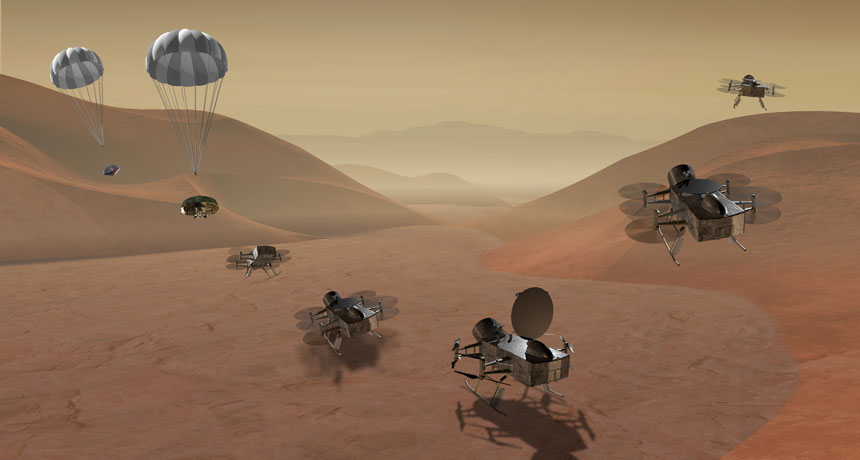With Dragonfly, NASA is heading back to Saturn’s moon Titan
The spacecraft will zip, hover and land its way across the lunar landscape

DESTINATION: TITAN It’s official: The next stop for a NASA spacecraft will be Saturn’s largest moon, Titan. A rotorcraft will parachute in and then perform dronelike exploration, as seen in this artist’s illustration.
NASA







